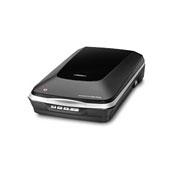Epson Perfection V500 Flatbed Scanners
Epson Perfection V500 Flatbed Scanners
USER REVIEWS
|
[Jan 13, 2011]
cron90
Expert
Strength:
-Scans of certain MF films can rival that of top-end scanners. Results will vary with native film contrast, development, and lens used. Recommended films: Acros 100, Plus-X, Tmax 100/400 II.
Weakness:
-Don't have big expectation for any 35mm. Close examination will reveal lots of artifacts, poor shadow detail, lack of finest details. Don't use this scanner to show off you latest Summicron aspherical baby.
I have used the Epson V500 for several years, but also have experience with both the Nikon Coolscan V and 8000 ED. The Epson is a tremendous value and comes very close to what the Nikons can do at a fraction of the price. The results from the V500 are heavily dependent on choice of film and expertise at post-processing. In general, scans of fine-grain high-contrast films have been the most successful for me
Customer Service none needed Similar Products Used: Nikon Coolscan V, 8000 ED. |



